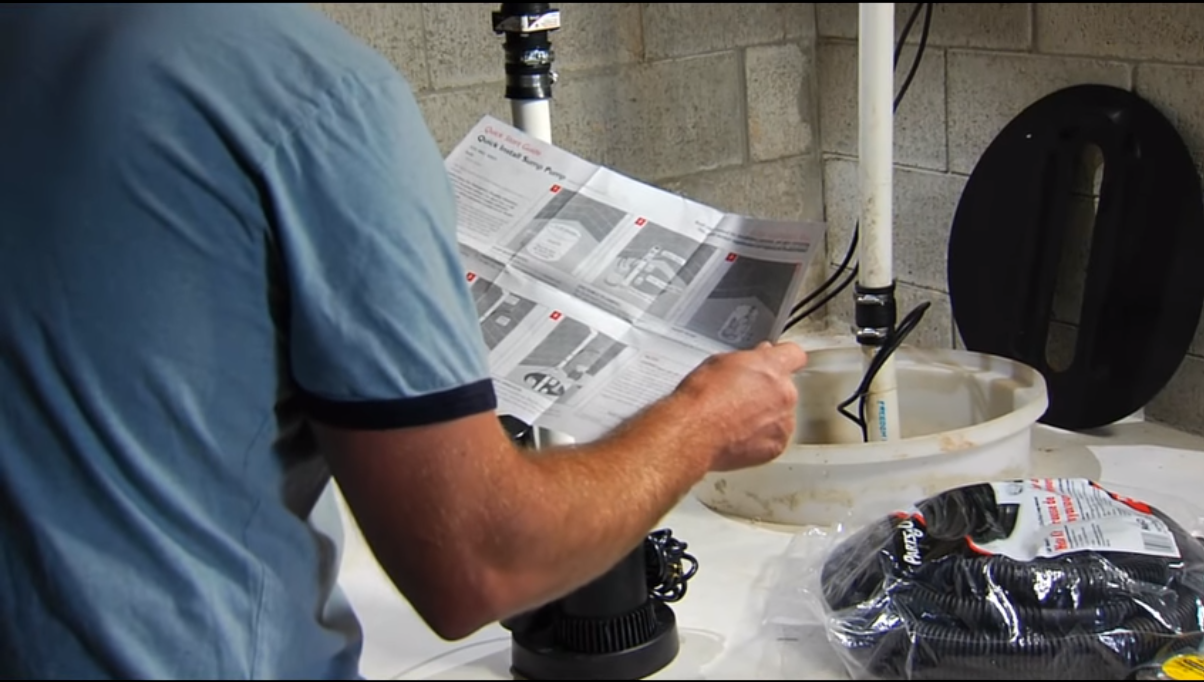- Home
- Education & Support
- Frequently Asked Questions
- Sump Pump Troubleshooting FAQ
Most Frequently Asked Troubleshooting Questions
Need help troubleshooting what is wrong with your sump pump? Here are answers to some of the most frequently asked questions to help you identify pump problems and how to fix them.
-
How do I know if my pump works?
-
Most Pentair Sump Pumps offer a piggyback plug, meaning there are two plugs connected which plug into the wall. Since the float switch is the most common fail point on a sump pump, you can disconnect the float switch plug and insert the pump plug into the wall to test your pump. The pump should immediately run. It will continue to run as long as you leave it plugged in this way. Do not leave it plugged in for more than a few minutes so that the pump does not overheat.
To test to make sure the float switch is also working, or if your sump pump has a switch that plugs directly into the body of the pump, you will need to lift the float switch to its 'on' position. This will vary depending upon pump model so consult your owners' manual for that information. To avoid possible electric shock, use a broom handle or similar non-conducting item to lift the float switch. The pump will run when the switch reaches its 'on' level.
-
Why does my pump run continuously?
-
This either means you have a lot of water coming in or the float switch is stuck in the ON position. You will need to remove the sump basin cover and assess your pump to determine the cause. Be sure to disconnect the power to the pump before servicing it.
-
Why is my pump noisy?
-
This either means you have a lot of water coming in or the float switch is stuck in the ON position. You will need to remove the sump basin cover and assess your pump to determine the cause. Be sure to disconnect the power to the pump before servicing it.
Float switch failure
The float switch is typically the first thing to fail. If you test your pump using the piggyback plug mentioned above, and it still works, you can replace the float switch and keep using the same pump.Pump cord and float switch cord are plugged in separately
Plug pump cord into piggyback connector on back/side of float switch plug. Put the combination into a single receptacle of an outlet.Float switch is stuck
Inspect pit for anything that can cause the float ball to get stuck and not settle to its 'off' position. Remove obstacle or relocate pump or switch to avoid the obstacle.Float switch is out of adjustment
For tethered style floats, ensure there is a minimum of 3" of cord between float ball and cord mounting bracket.For vertical style floats, check adjustment of rubber stopper under the float ball at the bottom of the float rod.
Water is not being discharged from pit
See section "Motor is just humming -- not running”Simply have too much water coming in
Check discharge to be sure water is being ejected from pit. If it is, but water level in pit does not drop, then you simply have more water coming into the pit than the pump can move out. If pit is not overflowing, no real issue is present but you may wish to have a spare pump on hand in case the pump fails from over-use.Using vertical style or electronic probe style float switch in sump pit that gets laundry water
Laundry water builds up soap scum on the float switch which will impede float movement. Soap scum on probes of electronic float switch can make contact even when water is gone "fooling" the switch. Only an effluent style pump with tethered style switch should be used if laundry water is to be pumped.
-
Why is my pump noisy?
-
Discharge pipe is rattling or banging against wall and/or floor joists
Put insulating foam between pipe and wall and/or joists. Can also try hanging the pipe with an exhaust hanger from an auto parts store. Install a section of flexible rubber hose (like radiator hose) between the pump discharge and the discharge pipe to provide vibration insulation.Check valve slams shut causing a bang just after pump shuts off
Install a section of flexible rubber hose (like radiator hose) between the pump discharge and the discharge pipe to provide noise insulation.You may be using a pump that is higher in horsepower than you need. It is causing the water to move too fast in the pipe. After the pump shuts off the water column keeps moving upward for a moment, then slams down
Pump is sucking air at end of its cycle
Adjust float switch per the owner's manual so it shuts off before it starts sucking air.Pump itself is vibrating
Inspect impeller for broken or missing blades. Replace impeller or pump to rectify but also inspect sump pit to eliminate debris that could damage new item.
-
What is the most common cause of sump pump failure?
-
Probably the most common cause of sump pump failure is electrical in nature. Plugging the pump into an extension cord, or an outlet that shares a circuit breaker with other electrical items, can cause the pump to receive low voltage. In order to run it then has to draw higher amps. That causes the pump to run hotter. Heat is the enemy of electric motors and can shorten the life of a pump dramatically. We recommend the pump be plugged directly into an outlet (no extension cords) and that the outlet be the only thing powered by the circuit breaker (or fuse) that feeds it.
-
Why does my fuse or circuit breaker blow when my pump tries to run?
-
Water got into cord and/or float switch connector (especially possible if your breaker is a GFCI type breaker)
Separate pump plug from switch plug use hair dryer to dry them out. Remove cord connector from top of pump and dry out with cloth or hair dryer.Impeller is stuck or jammed with debris
Remove screen from bottom of pump and make sure nothing is preventing the impeller from moving freely. Remove any obstructions.Using an extension cord or wiring to outlet is too light
Check to make sure the wire supplying power to the pump is appropriate for the horsepower and amp draw of the pump that's in place.Float switch is bad
Plug pump directly into outlet (without plugging into float's piggyback plug) to see if pump runs without popping breaker or fuse. If it does, but it pops fuse/breaker when plugged in through float switch, the float switch is bad. Replace the float switch.Pump motor has a shorted winding
Replace the pump.
-
Why does my pump eject water for a bit but shuts off early?
-
Pump is overheated and shut off by thermal overload
Be sure plump is plugged directly into outlet. If extension cord MUST be used, ensure it is heavy enough gauge for horsepower of pump and length of cord. It is recommended that the outlet be fed by its own circuit breaker (or fuse). If the breaker (or fuse) sends power to other things, the pump can be shorted of voltage when it starts.Float switch is out of adjustment
Check if pump shuts off before float ball is all the way down. If it's shutting down too early, adjust float switch per instructions in owners' manual.Float switch is bad
If adjustment above did not resolve problem, or no adjustment is possible, replace float switch.
-
Why does my motor hum but little or no water moves?
-
Motor is just humming -- not running
This likely means the suction on your pump is blocked by debris. You may be able to dislodge the debris without having to disassemble the pump. Be sure to disconnect the power to the pump before servicing.Pump is air-locked
Drill 1/16" to 1/8" anti-airlock hole in pipe just above pump's discharge and just below check valve.Check valve is stuck closed or installed incorrectly
Check valve usually has an arrow on it indicating water flow. Ensure it is pointing up toward discharge, not at pump. Inspect to see if check valve is stuck closed.Impeller is damaged
Inspect impeller for worn or missing blades. Replace impeller if needed..
-
How do I replace my sump?
-
Review the videos on the Sump Pump Troubleshooting page to see how to replace your pump.



